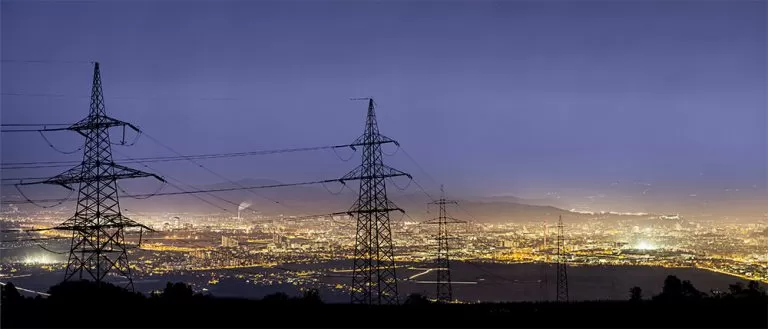Check out our White Paper Series!
A complete library of helpful advice and survival guides for every aspect of system monitoring and control.
1-800-693-0351
Have a specific question? Ask our team of expert engineers and get a specific answer!
Sign up for the next DPS Factory Training!

Whether you're new to our equipment or you've used it for years, DPS factory training is the best way to get more from your monitoring.
Reserve Your Seat Today
Remote monitoring is an indispensable function for utilities. By monitoring generators, transmission lines, and substations, utilities can detect equipment issues before they occur. This enables more accurate responsive maintenance.
As opposed to simply relying on predictive failure models or reports of malfunctioning equipment, utilities can pinpoint emerging failure conditions and correct them. This decreases wasted travel and diagnostic time and prevents expensive downtime.
Some issues, such as overheating, can even be corrected remotely, potentially saving hours of windshield time. With the right monitoring tools, utilities can also prevent or detect vandalism, sabotage, and theft at remote sites.
Utilities are large institutions, and typically implement new remote monitoring technology on an ongoing, cyclical basis. As older equipment ages out, newer equipment is procured to replace it.
To achieve the highest possible benefits, utilities must continuously reassess which remote monitoring management tools provide the most needed capabilities.
Staying up-to-date on the top remote monitoring solutions ensures utilities can trust the equipment that's watching their core systems.
Remote terminal units (RTUs) are the eyes, ears, and hands of remote monitoring solutions. These essential tools are installed on location, anywhere with important, mission-sensitive equipment.
Outfitted with an array of sensors, remote terminal units continuously watch for indicators of equipment concerns or trouble. They track temperature, humidity, battery levels, generator oil pressure and fuel tank levels, wind speed, water levels, unauthorized entry, and other essential indicators.
Manufacturers offer a wide variety of remote terminal units. While standardized models are available, RTUs are better understood as platforms for appropriate sensors. Each site or site type may have different equipment or conditions requiring monitoring. Different versions of the same RTU can successfully monitor a diverse array of important remote sites.
RTUs can be broadly separated into three categories based on the size and capability (small, medium, and large). Here are examples of some leading RTUs in each category:
Many small remote sites have only a few conditions they need to monitor, and limited space available for additional equipment.
Intended for medium sites, like minor substations, the M16 can monitor more than twice as many alarm conditions as the DIN - up to 16 discrete alarms and 4 analog channels.
Intended for large, complex remote sites, the 832A G5 monitors 32-176 discrete alarms (with additional expansion shelves), 32 ping alarms, and 8 analog channels. It controls 8 relays and has 8 serial ports.
Finding the right remote monitoring and management tools for each site improves system operations and maintenance, reducing the risk of downtime and outages.
But RTUs don't do all the work themselves, especially for utilities monitoring more than a dozen sites.
With more than a dozen RTUs in a system, the noise overwhelms the signal. Direct alarm reporting via email or text can quickly become a nuisance. Master stations solve this, sorting, prioritizing, and rationalizing the alarms from a medium or large network of RTUs.
Master stations also provide another important benefit - translation. Utilities with legacy remote monitoring solutions may have RTUs or other transmitting devices from different years and various manufacturers which communicate via various protocols. A master station can unify patchwork legacy systems into a single, effective monitoring system.
The T/Mon LNX Remote Alarm Monitoring System is a good example of the leading master stations available. The T/Mon provides:
RTUs and master stations are designed to work together as effective remote monitoring and management tools. However, the master station is undoubtedly the linchpin of the system.
Upgrading a master station can significantly improve the visibility and utility of a legacy remote monitoring system.
Access to legible, timely maintenance information is what a modern master station provides, streamlining utility maintenance operations, reducing wasted time, preventing equipment failure, and keeping the lights on across the world.
DPS Telecom provides trusted, modern remote monitoring and management tools for utilities. To learn more, get a quote today!
Image courtesy Shutterstock